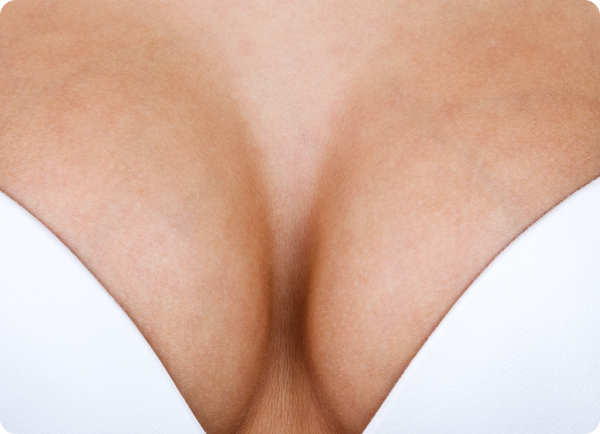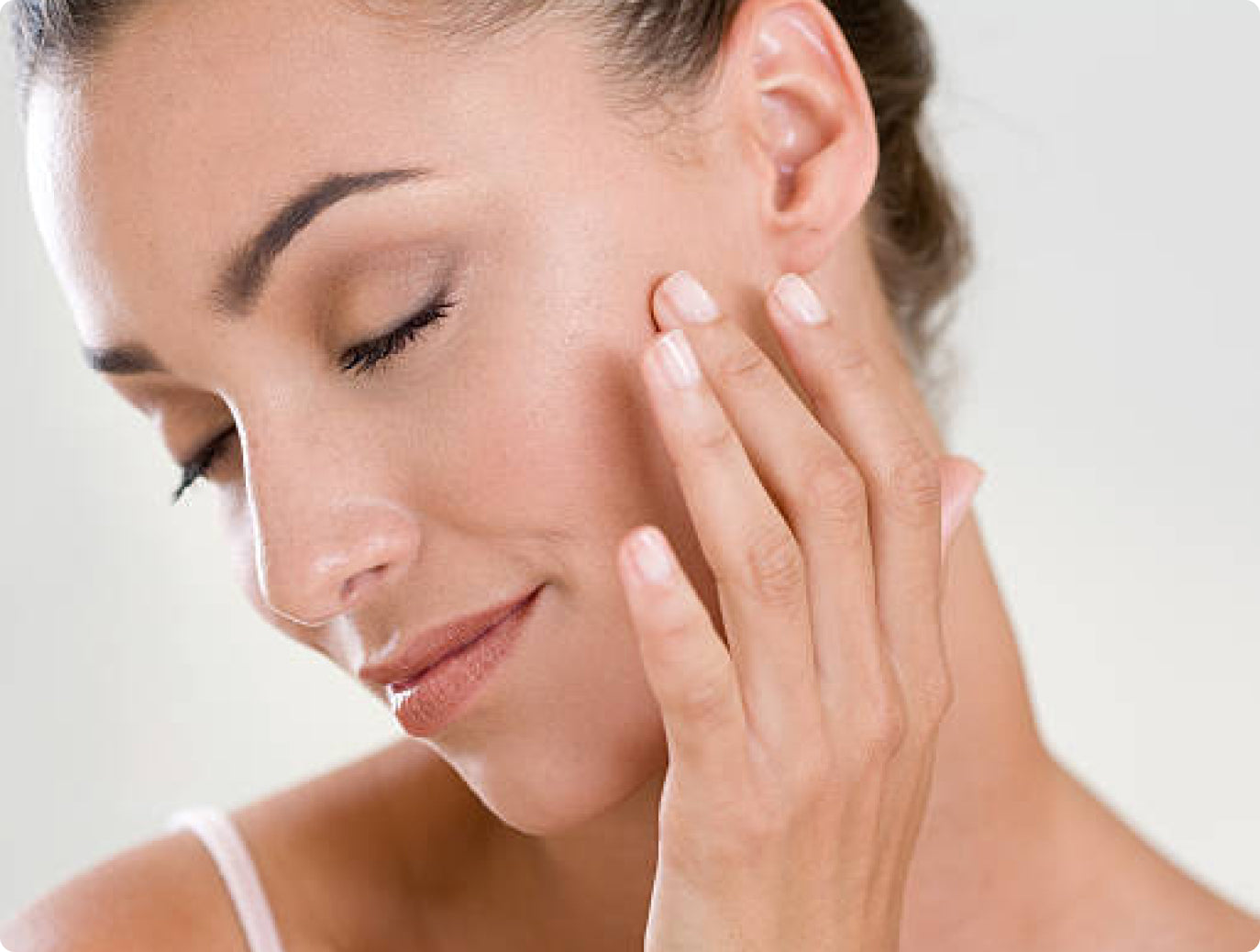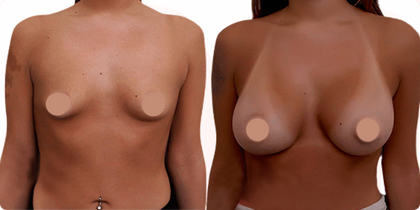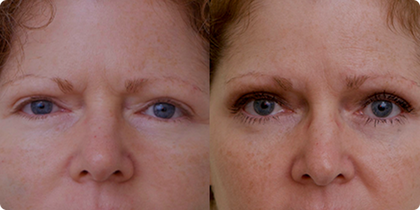
World Renowned Plastic Surgeon Joel Studin MD, FACS, Trusted by 10,000+ Patients
Dr. Joel Studin is an award-winning top plastic surgeon and the inventor of several medical breakthroughs. He has been awarded over 40 patents across
26 countries. His career has been dedicated to improving the field of plastic surgery. He has performed over 15,000 successful procedures and is internationally known for his expertise in breast surgery, laser eyelift, laser liposuction, mommy makeovers and rapid-recovery facelifts.
-
10,000+
Happy Patients
-
40+
Patents Awarded
-
30+
Years of Experience
-
15000+
Procedures Performed
Dr. Joel Studin is an accomplished plastic surgeon with over 30 years of experience. He has done over 15,000 successful surgeries and has been awarded 40+ patents for advances in plastic surgery. He has collaborated with plastic surgeons and medical professionals worldwide, providing invaluable insights to refine equipment and skills for superior results. Moreover, Dr. Studin has also helped millions of people worldwide by helping heal their scars. He created Scarguard, a scar treatment product proven in independent clinical studies and sold by stores worldwide, including Walmart, Walgreens and many other pharmacy chains. Many plastic surgeons worldwide use Dr. Studin's products to enhance their patients' results. He specializes in minimizing or avoiding scarring and minimizing or eliminating postoperative pain, earning him
a distinguished reputation in the medical field.
Dr. Joel Studin is an accomplished plastic surgeon with over 30 years of experience. He has done over 10,000 successful surgeries and has been awarded 40+ patents for advances in plastic surgery. He has collaborated with plastic surgeons
and medical professionals worldwide, providing invaluable insights to refine equipment and skills for superior results. Moreover, Dr. Studin has also helped millions of people worldwide by helping heal their scars. He created Scarguard, a scar treatment product proven in independent clinical studies and sold by stores worldwide, including Walmart, Walgreens and many other pharmacy chains. Many plastic surgeons worldwide use Dr. Studin's products to enhance their patients' results. He specializes in minimizing or avoiding scarring and minimizing or eliminating postoperative pain, earning him
Dr. Studin did training, residency and fellowship at
Why Is Dr Studin Internationally Known As A Top Plastic Surgeon For Breast Implants?
Dr. Studin is a top choice when it comes to breast implants. In addition to being Board-Certified with decades of experience, Dr. Studin was the only plastic surgeon in a multi - specialty breast center
in Manhattan for many years. Over thousands of surgeries, he perfected a 30-minute, usually painless breast augmentation procedure that gets most patients home in just a few hours and back out and about in just a few days. Dr. Studin carefully tailors every breast augmentation surgery to the individual's body and desires, considering their breast type, shape, skin qualities and several other factors to achieve the best results.
-

Pain Free
Most patients are surprised that they feel little or no pain at all after surgery, thanks to specialized techniques developed and perfected by Dr. Studin.
-

Fast Recovery
In the past, recovery from surgery was a slow process. But now, advanced, cutting-edge techniques are used to allow a swift recovery with minimal down-time. Most patients are back out and about in just days.
-

Minimal Scarring
Due to Dr. Studin's selection of incisions, sometimes, use of the laser for incisions instead of a scalpel, operative technique and postop care, most patients see minimal visible scarring after healing is complete.
-

Natural Results
Achieving flawless, natural-looking results after surgery and healing is a goal that Dr. Studin has worked to achieve for many years.
Dr. Joel Studin is both Board Certified and a Fellow of the American College of Surgeons.
-

American Society of Plastic and Reconstructive Surgeons
-

American Society for Laser Medicine and Surgery
-

ABMS' Maintenance of Certification American Board of Plastic Surgery
-

American Association for Accreditation of Ambulatory Surgery Facilities
-

American Medical Association
-

Lipoplasty Society
-

American Society for Aesthetic Plastic Surgery

Tummy Tuck
A tummy tuck, also known as abdominoplasty, removes excess fat and skin and restores weakened muscles to create a smaller, firmer and smaller abdominal profile. Weight fluctuations, pregnancies or just bad luck can cause loose abdominal muscles, often with extra skin and fat that cannot be corrected even with the strictest diet and strongest exercise regimen.
Taking from 1 to 2 hours, this surgery can be done with minimal pain using Dr. Studin's advanced techniques. You are home within hours and back out and about to almost everything sooner than you think. Come in for a free consultation to see if this procedure is right for you.

Breast Implants
If you never developed the breasts that you desire, or weight, loss or pregnancy has made them empty-looking, breast augmentation, maybe a great option for you. Breast implants can increasethe size and fullness, as well as improve the shape of the breasts. While everyone has some asymmetry, severely asymmetric breasts can be helped tremendously.

Facelift
The decision about whether someone needs a facelift, laser, resurfacing, an eye lift, or a vampire facelift without surgery, is not age -related. Instead, it is related to what the problemis for each individual. Some people are younger, have hanging jowls, and a loose neck. Others are young and have these problems. Some older people have more texture and pigmentation problems than gravity problems. They would do better with a laser resurfacing. If your problem is gravity - related, a facelift will take care of that. Fat muscles and skin are brought back
up to where they were when you were younger. Usually taking just a few hours, most go home with minimal discomfort and are out out and about in about a week. If you think a facelift might help you, see Dr. Studin, take a look at pictures of past patients, and discuss your options.

Eye Lift
Drooping upper eyelids can make you look tired. Bags of the lower lids always make you look older than you are. Laser Eyelift is a great way to turn back the clock, make you look alert, younger and more attractive. Just like an eyelift with a scalpel, the laser eyelift removes the excess skin and fat. However, it seals the blood vessels and lymphatics as it is done, resulting in much less swelling, bruising, and discomfort. Recovery is much faster. In less than an hour, this procedure is often painless and you are back to work and play in about a week

Smartlipo - Laser Liposuction
Most people don't know that you made all your fat cells by the end of puberty, and never make another one. So, if you have areas that are out of proportion to the rest of your body, they will still beout of proportion whether you are heavier or thinner. The only hope, is to get rid of them. Liposuction removes the extra fat, but the original liposuction
did nothing to tighten the skin. Smartlipo laser liposuction is a true advance. It helps encourage the skin to tighten after the procedure, making you look a whole lot better. Dr. student always combines laser liposuction with PAL, which is power assisted liposuction for smoother, tighter results. Come in for a free consultation for Dr. Studin to explain to you how the procedure works and what might be best for you.

Arm Lift
An arm lift, or brachioplasty, is a procedure to remove excess skin and fat to reshape and improve the contour of the upper arms. If your arms are too large, and the skin hangs from the elbow to the armpit, this procedure can help tremendously. Slimmer, toned, and more beautiful arms are indeed possible.
This procedure takes from one to two hours, is nearly painless, and you are home within hours. Most people are out and about in a few days and back to the gym after about four weeks.

Breast Lift
A breast lift, also called mastopexy, reshapes, raises, and creates much more youthful breasts. Aging, pregnancy, and weight fluctuation can cause loss of skin support andempty-looking hanging breasts. People can even have rashes in the folds due to trapped moisture. Sometimes, people have empty hanging breasts just due to bad luck because they genetically have poor skin elasticity.

Breast Reduction
While, some people think that overly large breasts could be desirable, people that actually have them usually don't feel that way. They can be uncomfortable, cause shoulder, grooving from brastraps, contribute to back and neck pain, cause rashes in the folds underneath and make you look heavier than you are. Breast reduction is more popular than ever before. As the only plastic surgeon in a multispecialty breast center in Manhattan for decades, Dr. Studin developed his method for the lollipop breast reduction over thousands of breast cases that
is nearly painless, and has you back out and about usually in five days. The surgery itself takes from one to two hours and you are home that same afternoon.

Chin Implant
A weak chin can cause many problems in facial harmony. Your nose can look bigger, your jowls might look saggy, your neck might not look as tight as it is, you could look older, less confident, and have an unattractive profile. Depending upon the structure of the jaw, some people need a chin advancement. Others, however, can have a chin implant, a much simpler procedure to correct this problem. This can be done from inside the mouth or beneath the chin through a small incision that usually is not noticeable.
See Dr. Studin to discuss what options would be best for you.

Rhinoplasty
If you feel like your nose, does not fit your face, then a rhinoplasty also called a "nose, job" can restore facial harmony and beauty. A rhinoplasty is done for several reasons. The nose may be too big,too small, too wide, have a bump on top, have a large tip, be unusually asymmetric, hang down or tilt up too much or otherwise, have an unusual shape. This procedure is different for each individual, and must be tailored to fit what you need. Sometimes, it can be done for breathing problems as well. This procedure takes from one to two hours
for most people, and usually, does not require packing inside anymore. There is a small splint worn outside for about a week in most people. Pain is minimal and you are home a few hours later. See Dr. Studin for a free consultation to see how rhinoplasty might help you.

Vampire Facelift
Many people would like to look younger, but do not want to go through surgery. A Vampire Facelift can be a great solution for these people. Taking your own blood, the platelets, that carrythe growth factors or separated out. They are then injected back into the facial area to stimulate collagen production by your own cells. The results can be quite remarkable. Done with a light laughing gas called ProNox, it is an easier procedure than you might think. An advanced laser separator prepares these platelets in a much more controlled and
dvanced way than the original Vampire procedures which were done with little red top tubes and a centrifuge. Discuss the possibility of a Vampire facelift with Dr. student. During a free consultation.

Vampire Hair Restoration
Many people are upset by either thinning hair or losing hair. While hair transplants are an option, they are usually very expensive and tedious. In many cases, Vampire hair restoration is abetter place to start. Using the platelets in your own blood, the growth factors are injected into the areas of thinning hair. This encourages your hair follicles to start growing again,
usually resulting in thicker, younger looking hair. This procedure is done while you were awake, using, ProNox, a type of light, laughing, gas that you control yourself. Most people find it a very easy procedure that takes about an hour. Done with an advanced laser separator, this is much more reliable way to do the procedure then using the little red tubes and a centrifuge, as it was originally done.

Brazilian Butt Lift
This technique involves removing fat from other body areas and transferring it to the buttocks for a fuller appearance. Brazilian Butt Lift combines liposuction and fat transfer.This procedure carries more risk statistically than other cosmetic procedures. Therefore, Dr. Studin only performs it for severe deformities.
Tummy Tuck
Breast Implants
Facelift
Eye Lift
Smartlipo - Laser Liposuction
Arm Lift
Breast Lift
Breast Reduction
Chin Implant
Rhinoplasty
Vampire Facelift
Vampire Hair Restoration
Brazilian Butt Lift
Frequently Asked Questions
Dr. Joel Studin has been practicing plastic surgery for over 30 years. He limits his practice to only cosmetic surgery. Therefore, he is highly experienced in these cosmetic surgery procedures. He has taught, invented, patented, and practice plastic surgery with a
passion for natural and beautiful results.
What Cosmetic Surgery Procedures Does Dr. Studin Offer At His Great Neck, NY, Practice?
Dr. Studin offers many cosmetic surgeries such as breast implants, breast lifts, arm lifts, facelifts, neck lifts, rhinoplasty, tummy tuck, chin implants, and many more.
How Experienced Is Dr. Studin?
Dr. Studin has more than 30 years of experience and has performed over 15,000 successful surgeries in his lifetime. He limits his practice to only cosmetic surgery, therefore, he is highly experienced in these procedures
What Should I Expect During My Initial Consultation With Dr. Studin?
During your initial consultation with Dr. Studin, you can expect a thorough examination and a discussion of your aesthetic goals to determine the best approach for your specific needs.
How Much Does A Cosmetic Procedure With Dr. Studin Cost?
The cost of cosmetic procedures with Dr. Studin can vary widely depending on the procedures that are decided upon, and sometimes, your medical history. This will be discussed with Dr. Studin's staff after your consultation.
What Is Recovery Like After A Cosmetic Procedure With Dr. Studin?
Recovery after a cosmetic procedure with Dr. Studin varies, depending on the procedure that you are having. Procedures like liposuction, can have you back at the gym in just a few days. Breast augmentation, breast lifts, and breast reductions. Will have you back out and about in about a week, and back to the gym in 3 to 4 weeks. A tummy tuck could have you home for two weeks and back to the gym in 4 to 5. Facelift and eyelift will have you out and about in about a week, but you may have to cover some bruising with make up. Dr. Studin will explain all of this to you during your consultation.
Will My Results Look Natural?
Dr. Studin believes that looking natural is important for most people after cosmetic surgery. You should discuss your specific desires at your consultation so that you can be aligned with Dr. Studin regarding the goals of your procedure.
Is There An Age Limit For Cosmetic Surgery?
In most cases, there is no specific age limit for cosmetic surgery. There are a few exceptions. Rhinoplasty should be done at 15 years of age or older. The FDA has mandated that breast implants should not be done under 18 years of age. As far as facelift and eye lift, sometimes younger people really need these procedures and older people may have only texture problems and the best treated with only injectables or laser resurfacing. This is very variable and needs to be discussed with Dr. Studin at your consultation.
Are There Financing Options Available For Cosmetic Procedures?
Yes, there are financing options available for cosmetic procedures. Several financing companies offer payment plans specifically designed for cosmetic and plastic surgery.
Are There Any Risks Or Complications Associated With Cosmetic Surgery?
Like any other surgery, cosmetic surgery has some risk. These are minimized by having your surgery with a highly experienced surgeon like Dr. Studin, who is board-certified, in a facility that is accredited and also has a board certified anesthesiologist.
Blogs
JStudin
@dr.studin
Follow Us To Stay Tuned


































































